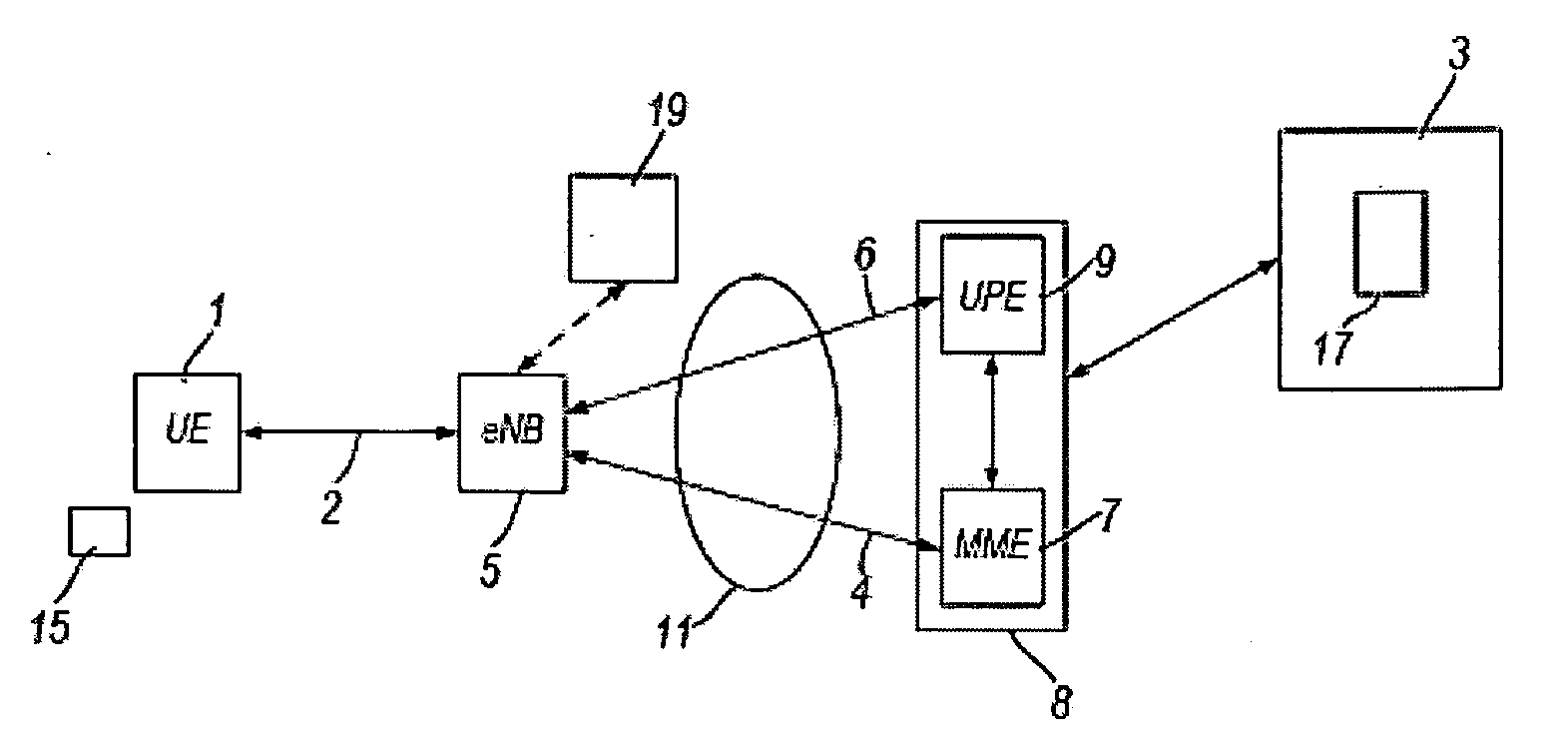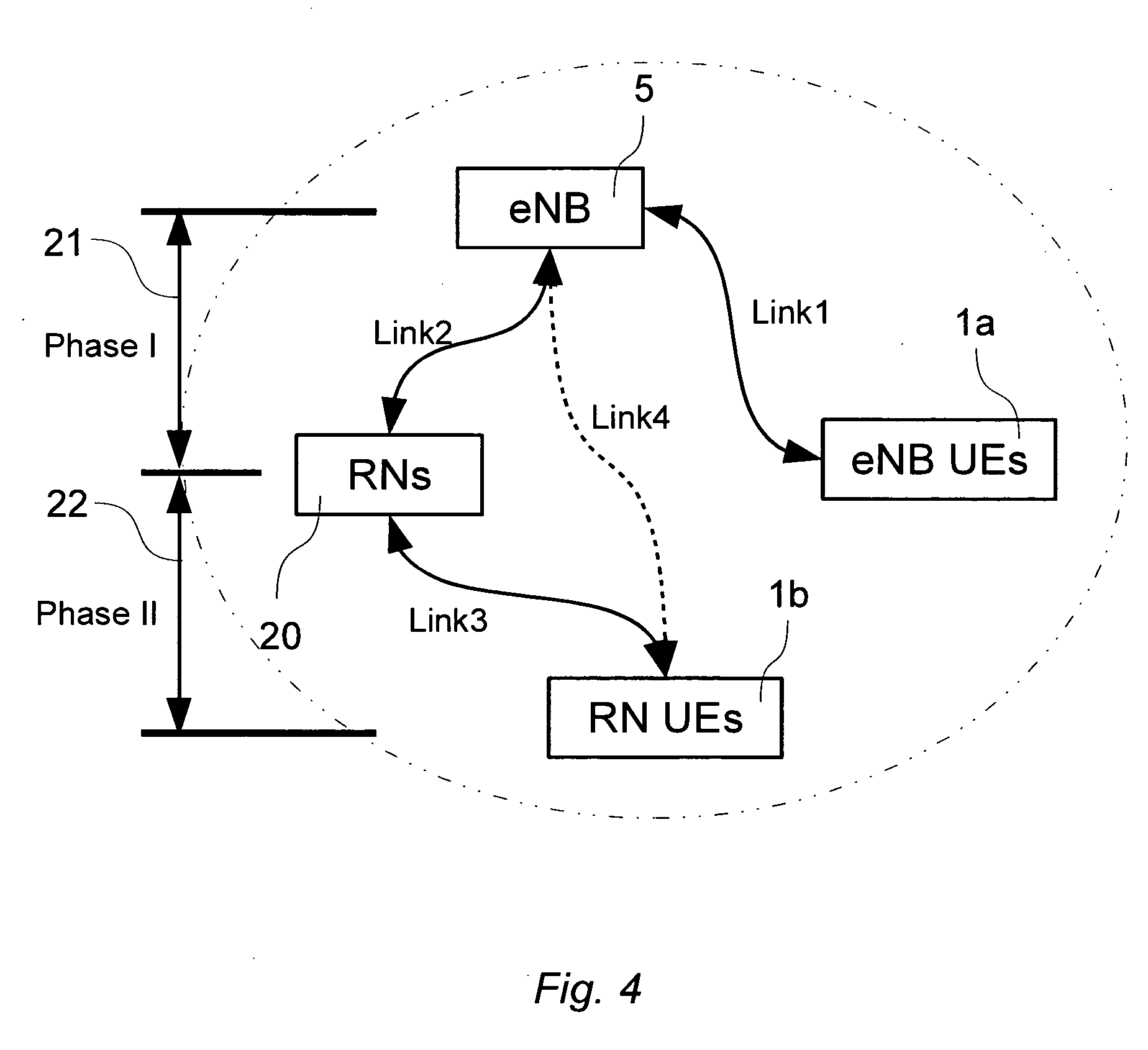Relays in telecommunications networks
a technology of telecommunications networks and relays, applied in the direction of transmission path division, repeater circuits, line-transmission details, etc., can solve the problems of interference affecting the data rate, node cannot simultaneously transmit and receive, and transmission over such wireless uplink and downlink channels is subject to errors, so as to reduce or prevent interference
- Summary
- Abstract
- Description
- Claims
- Application Information
AI Technical Summary
Benefits of technology
Problems solved by technology
Method used
Image
Examples
Embodiment Construction
[0044]FIG. 1 shows schematically the logical elements of an LTE / SAE mobile telecommunications network. Mobile terminal (UE) 1 is registered with mobile telecommunications network core 3. The mobile terminal 1 may be any device with mobile communication capabilities, including a handheld mobile telephone, a personal digital assistant (PDA) a laptop or desktop personal computer—for example, equipped with a wireless datacard. Although only one mobile terminal 1 is shown in FIG. 1, there will in practice be a multiplicity of mobile terminals, each of which is registered with the network core 3.
[0045]The terminal 1 communicates wirelessly with the mobile telecommunications network core 3 via the radio access network (RAN) of the mobile telecommunications network core 3 over radio interface 2. The RAN comprises a plurality of eNodeBs (eNB) 5. Each eNodeB 5 performs functions generally similar to those performed by the NodeB and the radio network controller (RNC) of a 3G network. Each eNod...
PUM
 Login to View More
Login to View More Abstract
Description
Claims
Application Information
 Login to View More
Login to View More - R&D
- Intellectual Property
- Life Sciences
- Materials
- Tech Scout
- Unparalleled Data Quality
- Higher Quality Content
- 60% Fewer Hallucinations
Browse by: Latest US Patents, China's latest patents, Technical Efficacy Thesaurus, Application Domain, Technology Topic, Popular Technical Reports.
© 2025 PatSnap. All rights reserved.Legal|Privacy policy|Modern Slavery Act Transparency Statement|Sitemap|About US| Contact US: help@patsnap.com



